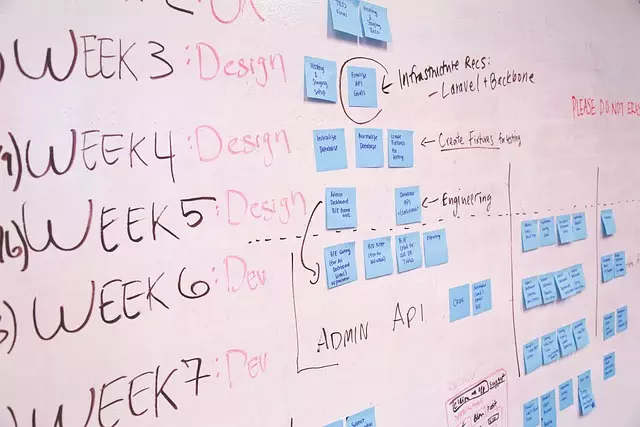CoolSculpting offers a non-invasive fat reduction solution using cryolipolysis, freezing and destroying targeted fat cells without anesthesia. Customized treatment plans focus on problem areas like belly, love handles, thighs or buttocks, with multiple 30-minute sessions for optimal results. Post-treatment care includes hydration, light exercise, and managing swelling/pain. Side effects are generally temporary, but severe issues require medical attention. Regular progress tracking and check-ins with specialists ensure optimal results and maintain treated areas' contouring over time.
“Unlock your body’s potential with CoolSculpting, a revolutionary non-invasive fat reduction technique. This article delves into the science behind this game-changing treatment, offering a comprehensive guide for those seeking maximum results. From understanding the process to customizing your treatment plan and post-care tips, we’ve got you covered. Explore eligibility criteria, side effects, tracking progress, and long-term maintenance strategies. Discover how CoolSculpting can transform your body, providing lasting results without surgery. Optimize your journey towards a slimmer, more confident you with our expert insights on CoolSculpting treatment plans.”
Understanding CoolSculpting: A Non-Invasive Fat Reduction Technique

CoolSculpting is a non-invasive fat reduction technique that has gained popularity as a safe and effective alternative to surgical procedures. This innovative treatment uses cryolipolysis, a process that freezes and destroys fat cells, leading to significant and lasting results. The procedure involves applying a cooling device to targeted areas of the body, causing fat cell cristals to form and eventually break, resulting in fat cell removal.
CoolSculpting Treatment Plans are tailored to individual needs, focusing on specific problem areas such as belly, love handles, thighs, or buttocks. During the treatment, patients can relax as the cooling device is applied, and no anesthesia is required. The procedure is non-painful, making it an attractive option for those seeking a convenient and comfortable way to achieve their desired physique without downtime. Multiple sessions may be needed to achieve optimal results, depending on the severity of fat accumulation and patient goals.
The Science Behind CoolSculpting Treatment

CoolSculpting treatment leverages advanced fat-freezing technology to safely and effectively reduce stubborn fat in targeted areas. During the procedure, a non-invasive applicator delivers controlled cooling to the fat cells beneath the skin’s surface. This triggers a process called cryolipolysis, where fat cells are crystallized and then broken down naturally by the body over time.
CoolSculpting treatment plans are customized based on individual goals and the amount of fat to be reduced. A typical plan involves multiple sessions spread over several weeks, allowing for gradual results as the body metabolizes the frozen fat cells. The procedure is generally well-tolerated with minimal downtime, making it a popular choice for those seeking non-surgical fat reduction without compromising skin integrity or overall health.
Determining Eligibility: Who is a Good Candidate for CoolSculpting?

CoolSculpting is a non-invasive fat reduction procedure that has gained popularity for its effective results. Determining eligibility is a crucial step before undergoing this treatment. The ideal candidate for CoolSculpting is typically an individual with healthy weight and specific areas of concern, such as stubborn fat bulges around the abdomen, flanks, or outer thighs. It is important to note that while it can be beneficial for many, it may not be suitable for everyone; individuals with certain medical conditions, pregnant or breastfeeding women, and those with unrealistic expectations should consult a qualified provider before proceeding.
The provider will assess your medical history, current health status, and lifestyle to create a personalized CoolSculpting treatment plan. During the consultation, they will consider factors like skin thickness, fat distribution, and desired outcomes to ensure that CoolSculpting is the best option for addressing excess fat in targeted areas. This tailored approach ensures maximum results while minimizing risks and side effects associated with the procedure.
Customizing Your CoolSculpting Treatment Plan

When considering CoolSculpting for maximum results, customizing your treatment plan is key. Every individual’s body is unique, and a one-size-fits-all approach rarely yields optimal outcomes. That’s where customization comes in—it allows specialists to tailor the procedure to target specific areas of concern. By assessing factors like body type, skin thickness, and fat distribution, CoolSculpting practitioners can determine the ideal treatment plan for each patient.
Customized plans ensure that energy is delivered precisely where it’s needed most, safely and effectively reducing fat cells. This personalized approach not only maximizes results but also minimizes side effects, making CoolSculpting an increasingly popular non-invasive body contouring option.
What to Expect During the Cooling Session

During a CoolSculpting treatment, patients can expect a comfortable yet slightly chilly experience. The procedure involves applying a device with controlled cooling technology to targeted areas. This innovative approach freezes fat cells, causing them to break down and be eliminated by the body’s natural processes. You’ll remain awake throughout the session, but many clients find the cold sensation soothing and report minimal discomfort.
CoolSculpting treatment plans vary based on individual goals and the amount of fat to be reduced. Typically, multiple 30-minute sessions are required for optimal results. Each session focuses on specific areas like love handles, belly fat, or thighs, allowing for precise fat reduction. The cooling effect not only targets fat but also provides a temporary numbing sensation, ensuring patient comfort during the procedure.
Post-Treatment Care and Recovery Tips

After your CoolSculpting treatment, proper care is essential for optimal results and a comfortable recovery. It’s recommended to drink plenty of water to stay hydrated, as this aids in flushing out toxins and supporting overall healing. Light physical activity, such as walking or gentle yoga, can be resumed within a few days, but intense workouts should be avoided for at least 2 weeks post-treatment to prevent any potential discomfort or adverse reactions.
A key aspect of post-treatment care is applying cold compresses or ice packs to the treated areas to reduce any swelling or soreness. You can also take over-the-counter pain relievers, such as ibuprofen, to manage any mild discomfort. It’s crucial to follow your CoolSculpting treatment plan and schedule regular check-ins with your provider to monitor progress and ensure a smooth recovery process.
Potential Side Effects and When to Consult a Professional

CoolSculpting is generally considered safe, but like any treatment, it’s not without potential side effects. Some common temporary reactions include redness, swelling, and discomfort at the treatment site. These typically subside within a few days to a couple of weeks. More severe, yet rare, side effects may include nerve damage, skin numbness, or fluid accumulation. It’s important to be aware of these possibilities and discuss them with a qualified professional before starting any CoolSculpting treatment plan.
If you experience persistent or severe symptoms after your procedure, it’s crucial to consult a healthcare provider who has experience with CoolSculpting. They can accurately diagnose any issues and recommend appropriate next steps. Additionally, if you have existing medical conditions, are pregnant, or are taking certain medications, open communication with a professional is essential to ensure the treatment plan aligns with your unique needs and minimizes potential risks.
Tracking Progress: Measuring Results After CoolSculpting

After a CoolSculpting treatment, tracking progress is crucial for evaluating results and understanding the effectiveness of your procedure. Measuring changes in your body takes time as fat cells need to be eliminated naturally by your system over several weeks and months post-treatment. Professional consultations at regular intervals allow experts to assess areas targeted during the CoolSculpting sessions, using both visual assessments and measurement tools to quantify reductions in fat layers.
Each patient’s journey with CoolSculpting is unique, so comparing before-and-after images alongside precise measurements against your original treatment plan becomes a powerful metric for success. It helps identify specific body parts that may require additional sessions or adjustments to future treatment plans for optimal results.
Long-Term Maintenance and Follow-Up Treatments

CoolSculpting isn’t just a one-time treatment; it’s often part of an ongoing beauty regimen. After your initial session, maintaining results requires long-term commitment. Regular check-ins with a certified specialist are crucial to assess progress and identify any areas needing touch-ups. These follow-up treatments act as boosters, ensuring your body retains the sculpted shape achieved during the original procedure.
CoolSculpting Treatment Plans evolve over time based on individual needs and metabolism. Specialists tailor recommendations for diet, exercise, and lifestyle changes to complement the treatment’s effects. Staying consistent with these plans can extend the longevity of results, keeping your figure looking toned and contoured for months or even years after your final session.



